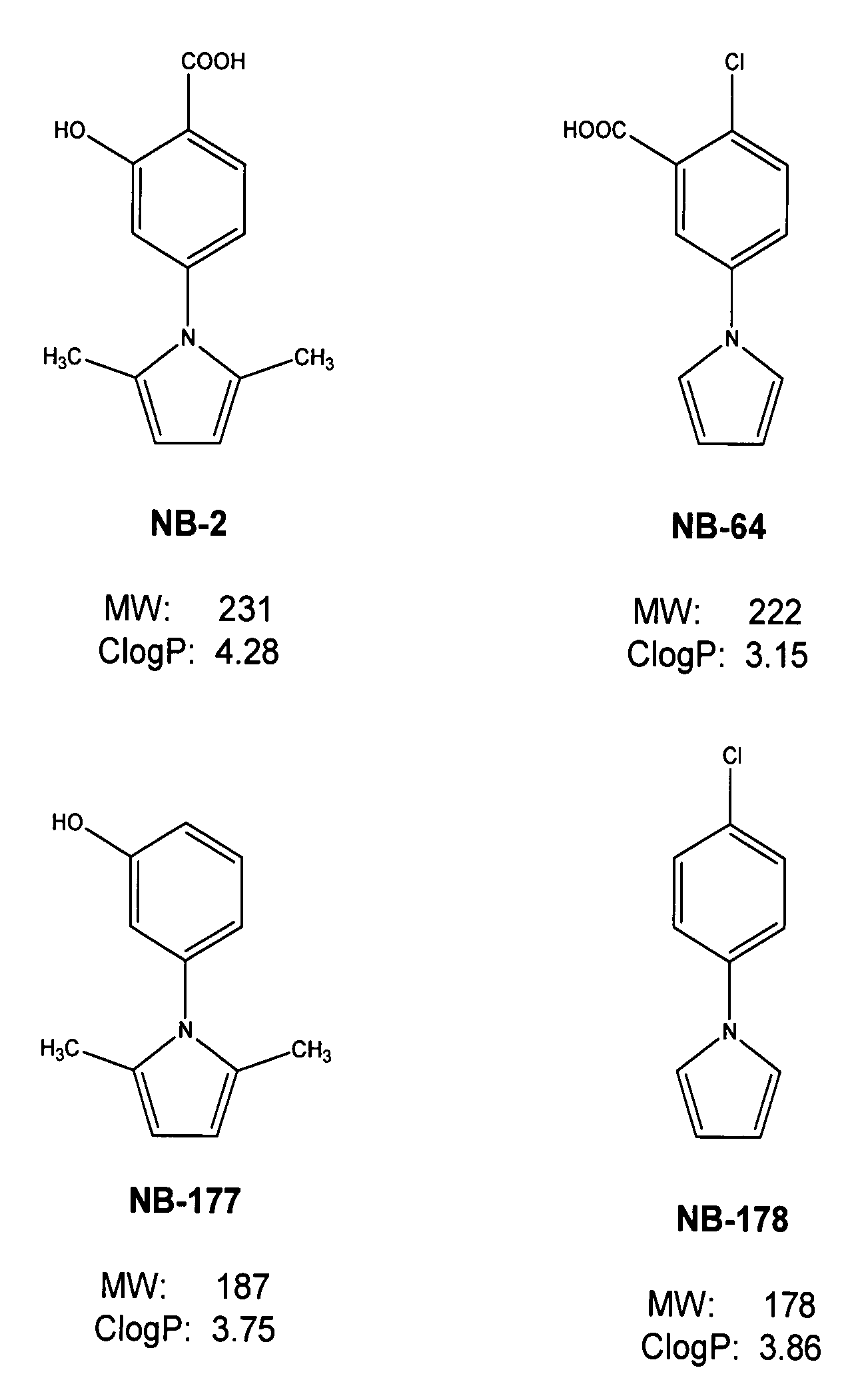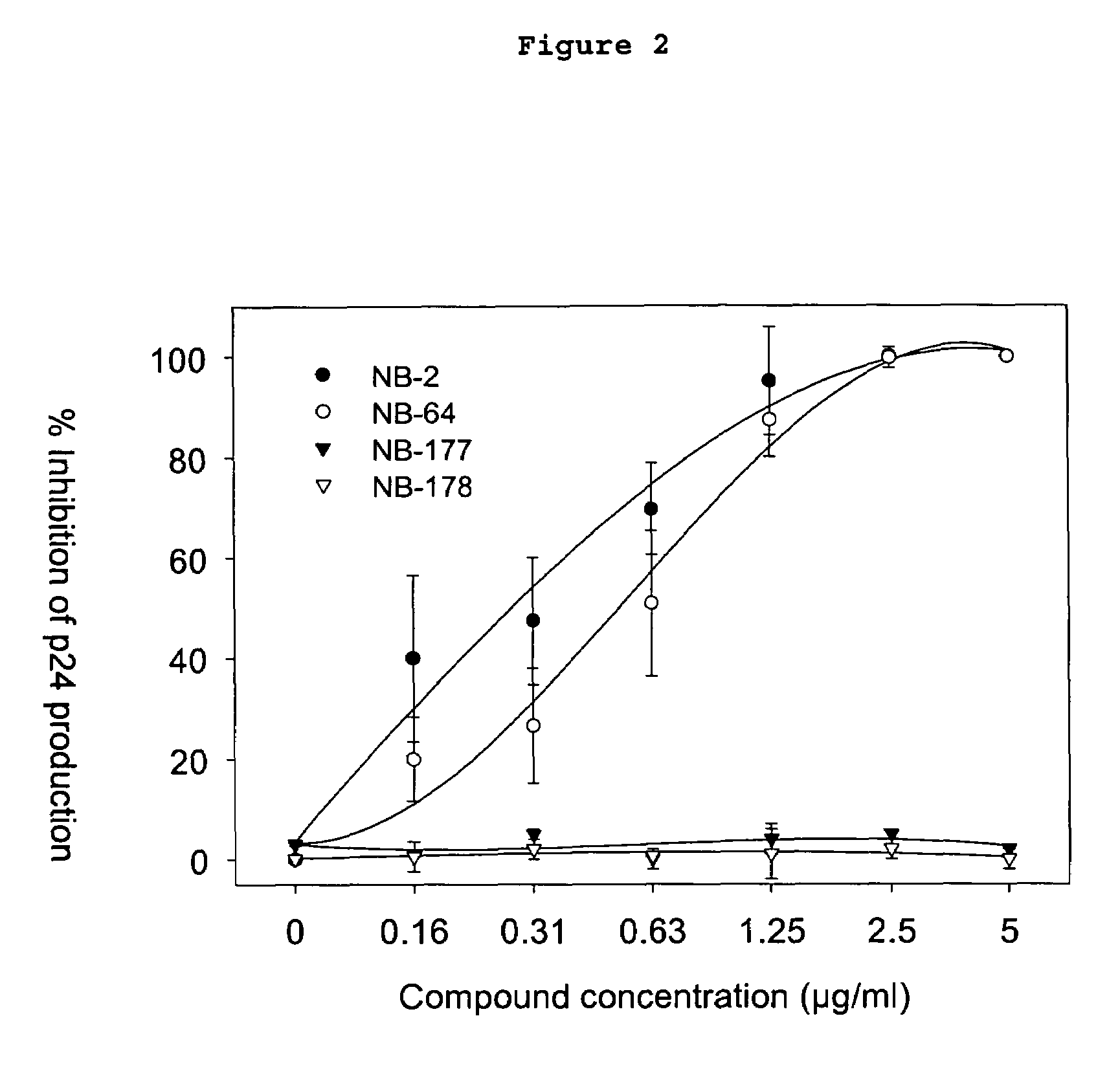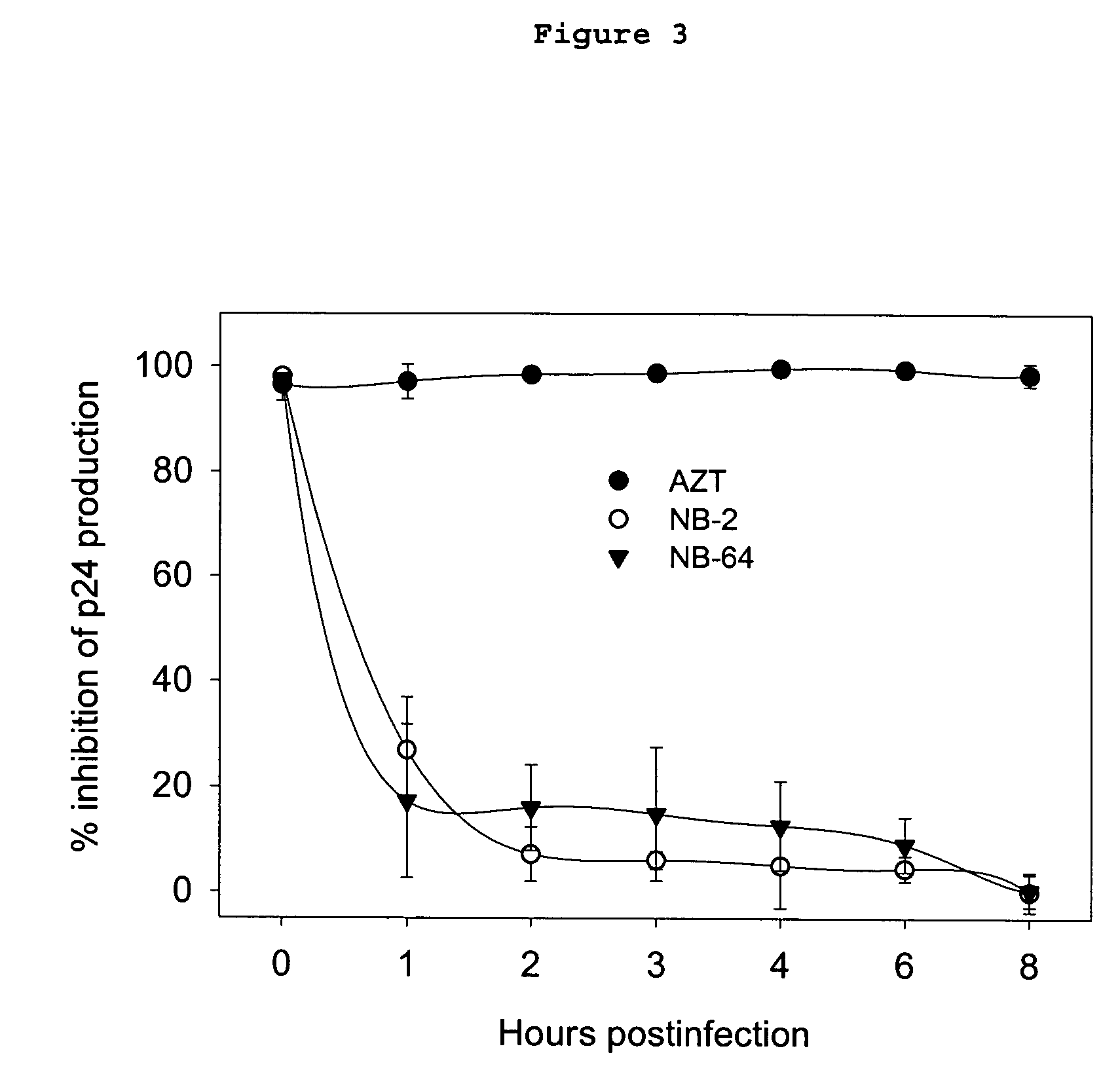Compounds for inhibition of HIV infection by blocking HIV entry
a technology of compound and hiv, which is applied in the field of compound for blocking hiv entry, can solve the problems of inability to develop good lead compounds, inconvenient future application of t-20, etc., and achieves the effects of inhibiting hiv replication, potent anti-hiv activity, and potent anti-hiv activity
- Summary
- Abstract
- Description
- Claims
- Application Information
AI Technical Summary
Benefits of technology
Problems solved by technology
Method used
Image
Examples
Embodiment Construction
[0036]This invention provides compounds for inhibition of HIV infection. Specifically, this invention provides a compound of molecular weight from 200 to 1200 Daltons, and logP of −2.0 to +5.5, capable of interacting with the hydrophobic cavity and blocking the formulation of the fusion-active gp41 coiled core domain. In a preferred embodiment, the compound is negatively charged.
[0037]This invention also provides a method for screening compounds capable of blocking HIV entry. Screening methods of antiviral compounds targeted to the HIV-1 gp41 core structure were described in Patent Cooperation Treaty (PCT) application, PCT / US00 / 06771, publication no. WO 00 / 55377, U.S. Pat. No. 6,596,497. The content of this PCT application is hereby incorporated by reference into this application. For an example, antiviral compounds may be screened by the following method:[0038]a) capturing polyclonal antibodies from an animal other than a mouse, directed against the HIV-1 gp41 trimeric structure co...
PUM
| Property | Measurement | Unit |
|---|---|---|
| concentration | aaaaa | aaaaa |
| volumes | aaaaa | aaaaa |
| pH | aaaaa | aaaaa |
Abstract
Description
Claims
Application Information
 Login to View More
Login to View More - R&D
- Intellectual Property
- Life Sciences
- Materials
- Tech Scout
- Unparalleled Data Quality
- Higher Quality Content
- 60% Fewer Hallucinations
Browse by: Latest US Patents, China's latest patents, Technical Efficacy Thesaurus, Application Domain, Technology Topic, Popular Technical Reports.
© 2025 PatSnap. All rights reserved.Legal|Privacy policy|Modern Slavery Act Transparency Statement|Sitemap|About US| Contact US: help@patsnap.com



